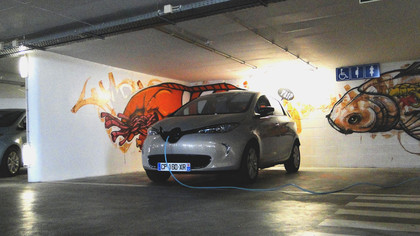Is Renault's revolutionary Zoe the first truly mainstream electric car?
We go hands on with the new electronic wonder

Are electric cars the future of motoring? That's a tough question, but with the arrival of the new Renault Zoe we can begin to work out some answers.
That's because, in many ways, the Renault Zoe is easily the most attractive and compelling electric car yet conceived. And it's perhaps the first truly mainstream electric car (or EV) ever made.
Much of that is down to simple pricing. UK on-the-road prices start at just £13,650. That makes the Zoe absolutely price competitive with conventional combustion cars in the same segment. That means cars like the VW Polo, the Vauxhall Corsa and, indeed, Renault's own Clio.
A complicated comparison
There are complications to that comparison. The Zoe depends on a £5,000 government EV grant that has recently been renewed but may not last forever.

You also have to factor in a minimum £70 lease charge for the Zoe's battery. You don't actually own the battery when you buy a Zoe, which is one of the things that helps keeps the purchase price down.
We'll come back to the financials momentarily. First, let's get to grips with the technology that goes into the car.
The core structure is based on the latest Renault Clio. So, you could think of the Zoe as simply a Clio with an electric motor and a fancy frock.
Sign up for breaking news, reviews, opinion, top tech deals, and more.

But that's not entirely fair, since the latest Clio was always conceived with optional electric power in mind. That's allowed Renault to engineer the Zoe's 22kWh, 290kg lithium battery pack to be located flat, low and centrally in the chassis.
So the Zoe actually has a lower centre of gravity than a Clio, which is always a good thing for driving dynamics, even if at nearly 1,500kg overall, it's a fair bit heavier than any Clio.
Not just an electric Clio

Inside and out, it looks completely different from the Clio, too. And that's all for the better, given the latest Clio's bland design. OK, the Zoe is a bit cutesy and Disney-fied. But it's basically a looker and certainly turns heads.
The cabin also has a mostly pleasing consumer-electronics vibe. The main interior colour options are black and white, with the latter taking on a particularly Apple-esque feel. In fact, the centre console has been designed to resemble a tablet computer.
Renault Zoe: Charging and R-Link
Inside and out, there are technical curiosities, too. In terms of ease of ownership, the anything-you-can-eat charging setup is a big plus.
It basically means you can plug the Zoe into pretty much any power source and leave it to sort out the rest. That includes anything from a basic home power socket to a triple-phase fast charger.
Charging times vary from nine hours for a full charge on that nine amp home socket to 30 minutes for an 80% top up on the triple-phase 63A fast chargers you occasionally see installed around town.

However, Renault is currently offering a special deal that gives you a Wall-box home charging unit for free, including installation. The Wall-box cuts home charging to three and a half hours.
R-Link extras
Making life even easier, there's a smartphone app that allows you to track and manage charging remotely.
Back inside, the main techy aspect of note is the Android-powered R-Link. It's pretty much the same as we've previously experienced on the Clio, so hop on over to our previous Renault R-Link landing page.

Suffice to say that we like the basic concept (a touchscreen Android based infotainment system). But we're unconvinced by the execution (sluggish response, less than compelling apps, low-res graphics).
It's also worth noting that the navigation, which is provided by TomTom, isn't up to the usual TomTom high standards. Frame rates are very low and the mapping can be confusing, leading to quite a few errors during our test drive.
Technology and cars. Increasingly the twain shall meet. Which is handy, because Jeremy (Twitter) is addicted to both. Long-time tech journalist, former editor of iCar magazine and incumbent car guru for T3 magazine, Jeremy reckons in-car technology is about to go thermonuclear. No, not exploding cars. That would be silly. And dangerous. But rather an explosive period of unprecedented innovation. Enjoy the ride.